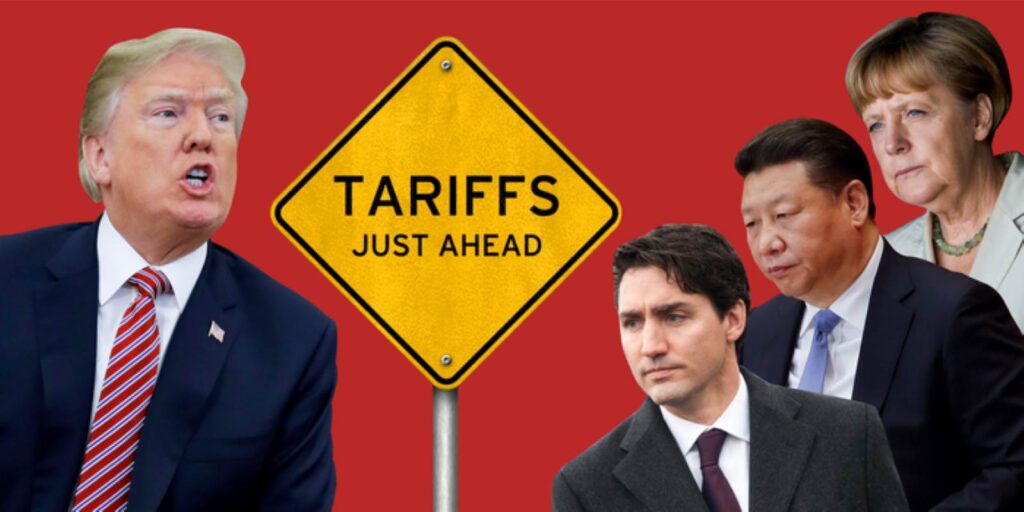Walmart e-commerce sales will likely go even higher at the tail-end of the year as many of the retailer’s customers have started shopping for the holidays. Items and fulfillment services that dominated customer spending were discretionary merchandise, online retail of gadgets like Apple AirPods, and even grocery delivery.
Walmart e-commerce sales and those from other sales channels are expected to experience an overall year-on-year increase of between 4.8% and 5.1%. The sales estimates from the early quarters of 2024 are relatively lower than those figures, with projections of sales increasing by 3.75% and 4.75%.
Stronger-than-Expected Quarterly Results
After monitoring consumer behavior over several consecutive quarters, Walmart’s financial team identified some glaring trends. For example, John David Rainey, the company’s Chief Financial Officer, said Walmart’s general merchandise sales grew significantly in the past two quarters. This is notable compared to the decline observed on the same items in the past eleven quarters.

As inflation is forcing consumers to buy groceries at a high price, many were simply waiting on the sidelines for compelling deals good enough to motivate a purchase. Rainey is confident that the sales trend will remain consistent until the end of the year.
Retail industry experts and Wall Street analysts participated in an LGSE survey and found Walmart’s revenue to be $169.59 billion, as against the estimated $167.72 billion. Similarly, the retail giant earned 58 cents per share, compared to the estimated 53 cents in the survey period.
ALSO READ: Walmart Ends Major Partnership, Leaving Customers Frustrated
E-Commerce Gains: Rising Online Orders and Delivery Fees
At the close of trading on Wednesday, Walmart’s shares hit a year-long high with a unit value of $86.60. This is the highest intraday increase of all time for Walmart shares since its 1972 listing on the NYSE.
Another retail industry metric, comparable sales or same-store sales, spiked by 5.3% for Walmart and 7% for Sam’s Club. This metric implies that Walmart’s patronage increased through mobile shopping, grocery delivery, store visits, and omnichannel shopping. Based on year-on-year comparisons, Walmart US transactions increased by 3.1%.
Narrowing down on Walmart e-commerce sales in the US, reports indicate that patronage increased by 22%. This increase is thanks to the retailer’s investment in advertisements about its third-party businesses and digital marketplace. Delivery services prioritizing customer experience, like curbside pickups and home delivery, boosted Walmart e-commerce sales.
Net Income and Revenue Growth in Q3
Walmart’s finance team has also linked e-commerce growth to consumer sentiment and preference for receiving online retail orders faster. Retail chains are also deploying innovative technologies for inventory management.
Comparable Sales and Shopper Behavior Trends
According to Rainey, another emerging consumer behavior noticed among Walmart patrons is an increase in subscriptions to express delivery services. Of course, many retail chain customers exploit the omnichannel shopping customer experience instead of restricting themselves to one method of shopping. However, Walmart’s CFO noted that 30% of customers preferred to pay an extra charge to receive orders within one to three hours in the past two quarters.

Rainey suggested that Walmart’s e-commerce growth is an indication that the retailer will soon start exploiting it as a revenue source. Customers seem to be more informed about the value of mobile shopping and similar fulfillment services.
Challenges for the Holiday Season: Inflation, Tariffs, and Weather
Despite all these positive factors, the retail industry is still apprehensive about how sales will go this holiday season. There’s the fear that the outcome of the recent US Presidential Race will affect consumer behavior. There are also fears of weather impacting retail. Warm weather during the holiday season may end up affecting retail sales.
Walmart’s Response to Tariff Risks and Diversification Efforts
As far as Walmart is concerned, Rainey suggested that President-elect Donald Trump’s policy proposal to impose tariffs on imports may cause price increases. He said, “Our model is everyday low prices. But there probably will be cases where prices will go up for consumers.”

However, if Trump’s tariffs are indeed affected, Rainey believes that most retailers, like Walmart, will ride out the storm. Some inventory management tricks, like working closely with suppliers, should help keep prices down. However, the tariffs will inevitably cause some items to see an uptick in sticker price.
ALSO READ: Walmart Teams Up with Major Food Chain to Provide Free Food
Holiday Spending Outlook and Early Trends
Despite the economic dynamics that may play out with the incoming administration’s monetary policies, the National Retail Federation is confident that this year’s holiday retail sales will increase by 2.5% to 3.5%.
Thanks to the uplooking Walmart e-commerce sales and revenues from other sources, we are sure shareholders will be happy with the progress of their investment. The S&P 500 is expected to receive average gains of 24% during this holiday season. Meanwhile, Walmart shares have gained approximately 65% value this year.

